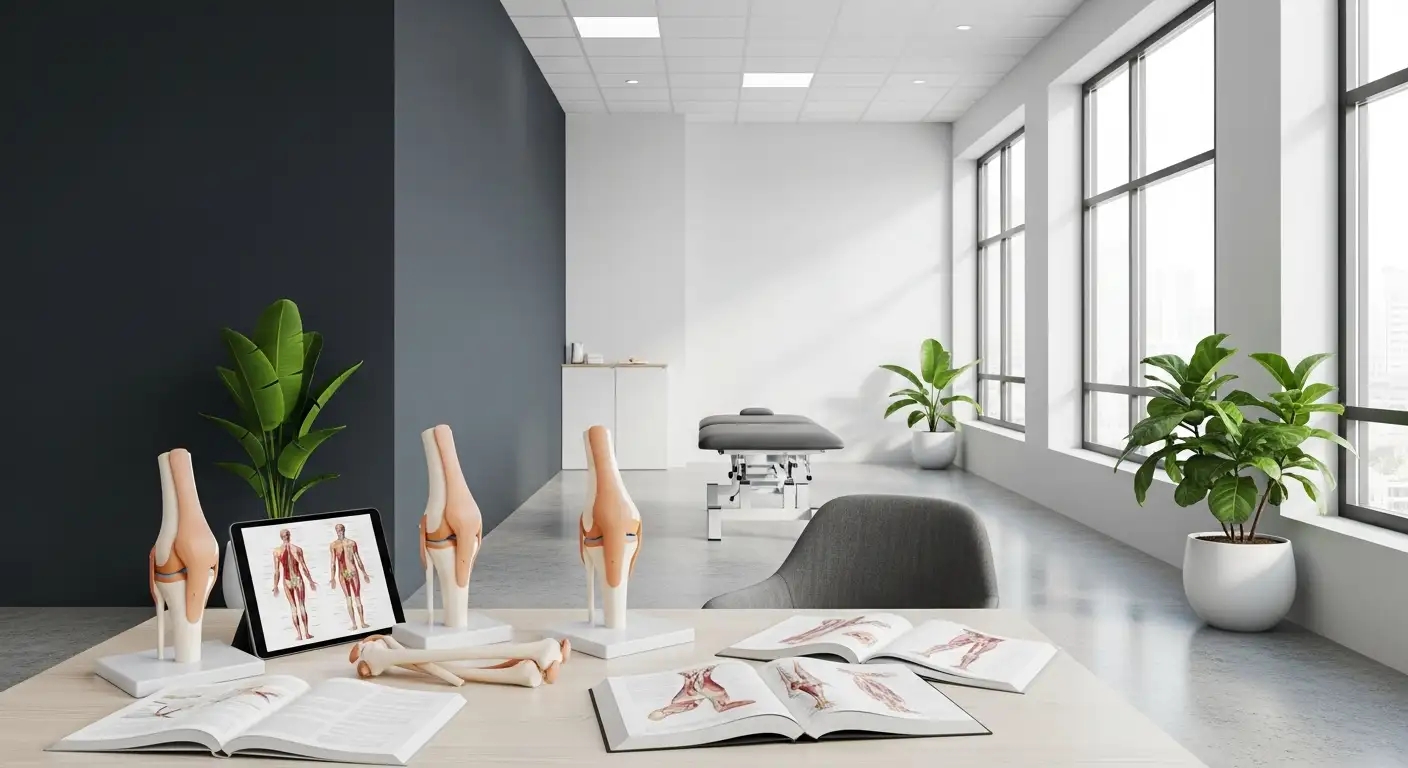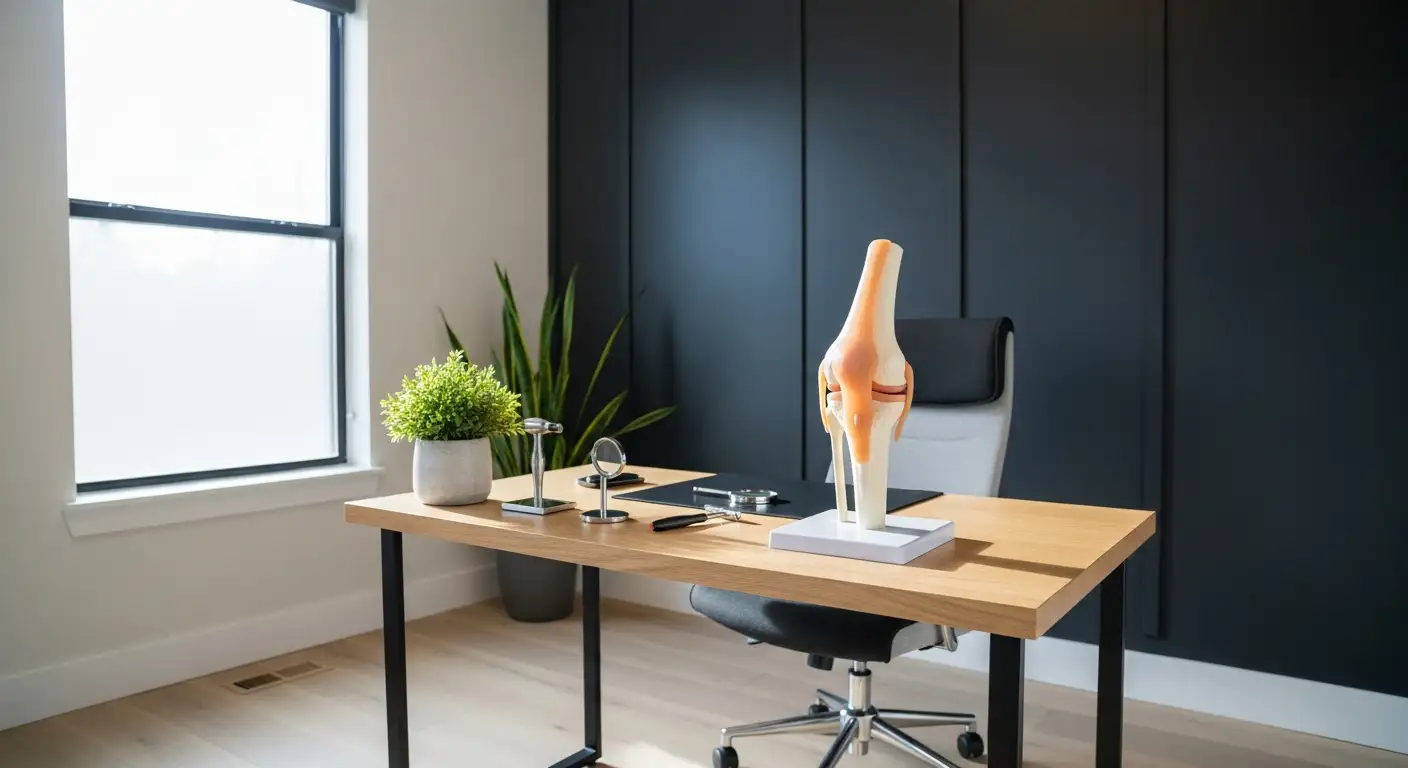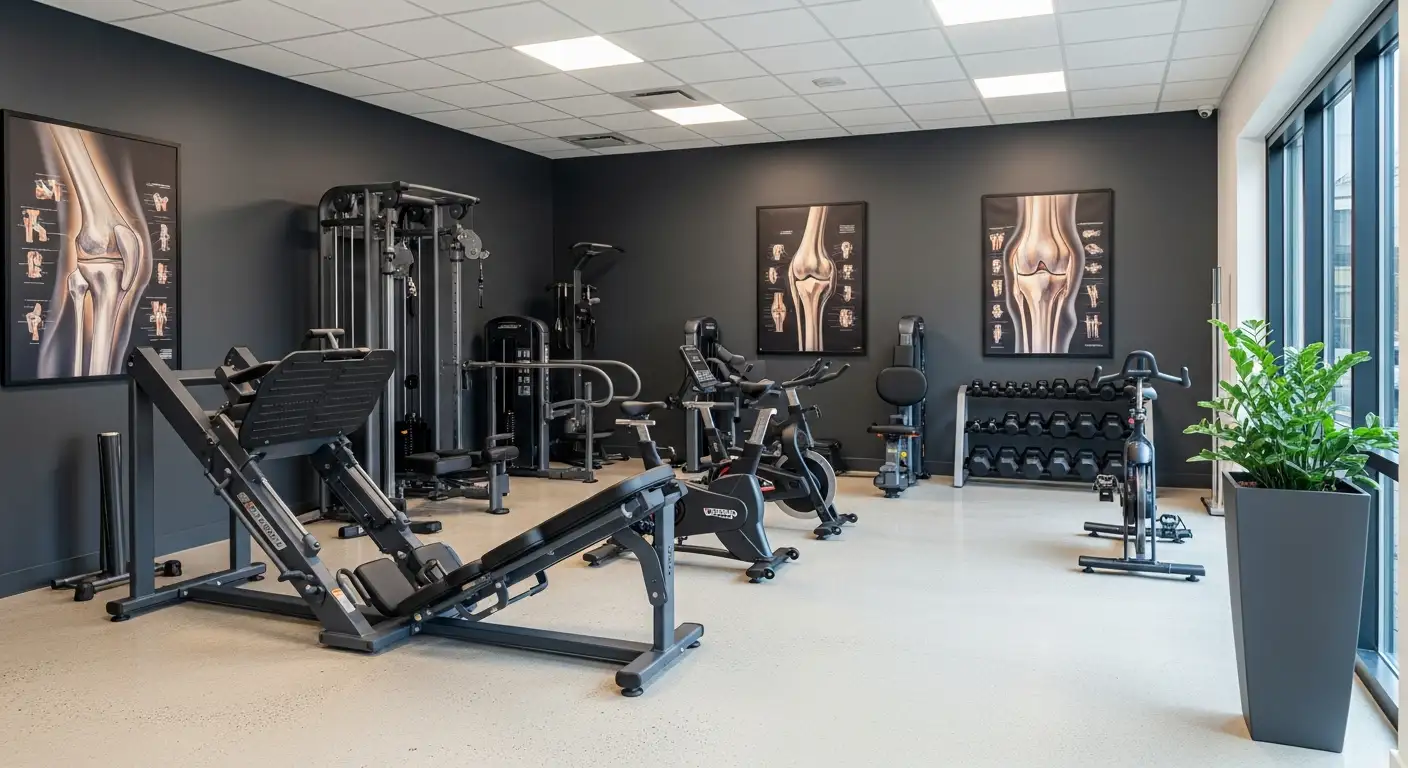The Importance of Glute Stretches
Benefits of Glute Stretching
Stretching the glutes plays a significant role in relieving discomfort, particularly low back pain and hip tightness. Regularly engaging in glute stretches can enhance flexibility, mobility, and the overall range of motion. Targeting the major muscles in the gluteal region—gluteus maximus, gluteus medius, and gluteus minimus—can alleviate tightness, improve movement, and facilitate daily activities like standing, walking, and sitting.
Engaging in glute stretches also aids in reducing or preventing muscle stiffness in the lower body. This stiffness often arises from activities such as intensive exercising, physical labor, or prolonged periods of sitting. To boost flexibility, mobility, and enhance lower body movement, stretching exercises are recommended by the Physical Activity Guidelines for Americans [1].
| Benefit | Description |
|---|---|
| Relieves Discomfort | Eases low back pain and hip tightness. |
| Increases Flexibility | Enhances overall flexibility and range of motion. |
| Improves Mobility | Facilitates smoother movements in daily activities. |
| Prevents Stiffness | Reduces muscle tightness caused by inactivity or exercise. |
When to Stretch Your Glutes
To maximize the benefits, it is crucial to stretch the glutes after workouts. This practice aids in boosting flexibility, preventing stiffness, and enhancing performance in subsequent physical activities [2]. Incorporating stretching exercises targeting the glutes effectively increases flexibility and mobility while also alleviating muscle tightness.
It is advisable to take safety precautions when incorporating stretching into a routine. Proper warming up before stretching helps to prepare the muscles and reduce the risk of injury. Additionally, individuals with pre-existing glute injuries should consult a healthcare professional before engaging in new stretching routines [1].
Gluteus Maximus and Its Functions
Understanding the gluteus maximus is key to recognizing its importance in body movement and overall physical performance. This large muscle plays a significant role in a range of daily activities and athletic endeavors.
Understanding Gluteus Maximus
The gluteus maximus is the largest muscle in the human body, representing approximately 16% of the total cross-sectional area of the body. It is located at the posterior aspect of the hip joint and is critical for generating power during movement. The gluteus maximus, along with the gluteus medius and gluteus minimus, helps individuals maintain stability and perform various dynamic movements.
The gluteus maximus is primarily responsible for actions such as:
- Hip Extension: It aids in moving the thigh backward when walking, running, or climbing stairs.
- Lateral Rotation: It allows for outward rotation of the hip, which is essential in many sports and activities.
- Stabilization: This muscle stabilizes the pelvis during movements, allowing for efficient force generation.
Role in Body Movement
The gluteus maximus plays a critical role in many everyday activities. It generates substantial power, enabling individuals to perform tasks such as standing up from a chair, climbing stairs, and engaging in athletic activities. When functioning effectively, the gluteus maximus contributes to:
| Activity | Role of Gluteus Maximus |
|---|---|
| Walking | Provides propulsion and support |
| Climbing Stairs | Aids in lifting the body upward |
| Running | Increases stride length and force |
| Standing from a Chair | Supports body weight and balance |
If the gluteus maximus is weak or tight, it can lead to inefficiencies in movement, which may result in knee discomfort. This connection highlights the necessity of incorporating a gluteus maximus stretch into a regular stretching routine to maintain flexibility and function. Proper stretching can improve muscle performance, prevent tightness, and contribute to overall joint health, reducing the risk of conditions that can cause discomfort in the knees.
For those experiencing tightness or discomfort, targeted exercises and stretches, such as the ones outlined in this article, can significantly improve mobility and comfort in movement. For further insights into addressing specific muscle issues, refer to related topics like knee popping out of place and knee extension muscles.
Best Glute Stretches
Incorporating effective stretches for the glutes can help alleviate knee discomfort and promote overall flexibility. Each stretch targets the gluteus maximus and its surrounding muscles, contributing to better mobility and reduced pain. Here, three recommended stretches are outlined.
Seated Figure-Four Stretch
The Seated Figure-Four Stretch is instrumental in promoting flexibility in the hips and glutes. This stretch is particularly beneficial for individuals who experience tightness from prolonged sitting.
How to Perform:
- Sit on the floor with your legs extended in front.
- Bend your right knee and place your right ankle on your left thigh, forming a figure four with your legs.
- Gently press down on your right knee and lean slightly forward until you feel a stretch in your right glute.
- Hold for 20-30 seconds and switch sides.
Benefits:
- Improves functional movements such as standing up from a seated position.
- Relieves muscle tension, particularly for those who run, cycle, or sit for extended periods.
- Helps in injury prevention and improves circulation [5].
Downward-Facing Dog
The Downward-Facing Dog is a yoga pose that stretches multiple muscle groups, including the gluteus maximus, hamstrings, and calves. This full-body stretch energizes and tones the body while easing tension.
How to Perform:
- Start on your hands and knees in a tabletop position.
- Press into your hands, tuck your toes, and lift your hips toward the ceiling, forming an inverted "V."
- Keep your spine straight while actively pressing your heels toward the ground.
- Hold for 30 seconds to a minute.
Benefits:
- Provides a deep stretch to the glutes, hamstrings, and calves.
- Promotes overall flexibility and strength.
- Encourages blood flow and can help alleviate feelings of fatigue.
Pigeon Pose
The Pigeon Pose is an effective stretch for opening up the hips and deeply targeting the glute muscles. It's especially useful for those with tight hips from activities like running or cycling.
How to Perform:
- Begin in a tabletop position.
- Bring your right knee forward and place it behind your right wrist while extending your left leg straight back.
- Keep your hips squared and lower your upper body towards the floor, resting on your forearms or straightening your arms ahead.
- Hold for 20-30 seconds and repeat on the other side.
Benefits:
- Significantly stretches the gluteus maximus and hip flexors.
- Improves flexibility and range of motion in the hips.
- Aids in relieving low back discomfort related to tight hip muscles.
By incorporating these stretches into a regular routine, individuals can experience improved flexibility and reduced discomfort, which may help with knee pain and enhance overall mobility.
Preventing Gluteal Tightness
Maintaining flexible and strong glutes is crucial for overall body health and can prevent discomfort in various areas, including the knees. Understanding the causes of tight glutes and implementing effective stretching routines can help mitigate issues.
Causes of Tight Glutes
Tightness in the glutes can arise from several factors, including:
- Prolonged Sitting: Extended periods of inactivity can lead to stiffness.
- Overuse: Engaging in repetitive activities like cycling, running, or walking can stress the glute muscles.
- Muscle Imbalances: Weakness in certain muscle groups may lead to an overcompensation by the glutes.
- Injury: Past injuries can create tightness or discomfort in the gluteal region.
- Poor Form During Exercise: Lack of proper technique can lead to undue stress on the glutes.
- Failure to Stretch Post-Workout: Neglecting to properly cool down can result in muscle stiffness.
| Causes of Tight Glutes | Description |
|---|---|
| Prolonged Sitting | Leads to stiffness due to inactivity. |
| Overuse | Repeated use during activities can create tightness. |
| Muscle Imbalances | Weak muscles can cause excessive strain on glutes. |
| Injury | Previous injuries can result in ongoing tension. |
| Poor Form | Incorrect exercise technique stresses the glute muscles. |
| Lack of Post-Workout Stretching | Skipping cooldowns may lead to stiffness. |
Stretching for Prevention
Regular stretching of the glutes plays a crucial role in enhancing flexibility, range of motion, and overall lower body mechanics. Incorporating glute stretches can reduce muscle stiffness caused by physical activity, promote recovery, and lower the risk of injury.
Here are some effective stretches to integrate into a routine:
- Seated Figure-Four Stretch: A gentle seated position that targets the glutes and hips.
- Pigeon Pose: A yoga pose that deeply stretches the glutes and hip flexors.
- Downward-Facing Dog: A classic yoga stretch that elongates the entire body, including the glutes.
Regularly stretching can also improve glute strength, enhance bone health, and promote better balance and body composition. This preventative practice is especially beneficial for those with conditions like arthritis, as it lubricates joints and maintains range of motion [1].
Integrating a consistent stretching routine focused on glute health not only aids flexibility but also contributes to overall physical well-being and injury prevention. Take actionable steps toward maintaining a healthy, active lifestyle that includes stretches for the glutes to prevent tightness and discomfort.
Strengthening with Glute Bridge
The glute bridge exercise is an effective method for targeting the gluteus maximus and the posterior chain, which includes the hamstrings and glutes. This exercise helps in generating lower body power and contributes to better balance and body composition.
Glute Bridge Exercise
To perform the glute bridge exercise, follow these steps:
- Lie on your back on a mat with knees bent and feet flat on the floor, hip-width apart.
- Place your arms at your sides, palms facing down.
- Engage your glutes and core.
- Press through your heels to lift your hips off the ground, forming a straight line from shoulders to knees.
- Hold the position for a moment at the top before slowly lowering back down.
This exercise not only strengthens the glutes but also supports the stabilization of the hip and spine, which is critical for overall mobility.
| Aspect | Description |
|---|---|
| Target Muscles | Gluteus Maximus, Hamstrings, Core |
| Key Benefits | Strengthens lower body, Improves stability, Increases power generation |
Variations and Benefits
The basic glute bridge can be modified to increase its effectiveness and target different muscle groups. Here are some variations:
| Variation | Description |
|---|---|
| Single-Leg Glute Bridge | Lift one leg off the ground while performing the bridge, which engages the core more and increases glute activation. |
| Weighted Glute Bridge | Place a weight or barbell across your hips while performing the bridge for added resistance. |
| Elevated Glute Bridge | Elevate your feet on a bench or step to increase the range of motion, enhancing the stretch and contraction of the glutes. |
| Prone Bridge | Similar to a plank position, this exercise activates the gluteus maximus gradually, stimulating muscle activation over time [3]. |
Engaging in glute stretches and exercises like the glute bridge has shown significant benefits. For instance, a six-week program focusing on glute stretching resulted in a 40% reduction in lower back pain symptoms. Stretching and strengthening the glutes can help maintain flexibility, mobility, and reduce the risk of injury.
Strengthening routines that incorporate these exercises can contribute to managing knee discomfort effectively. To learn more about how to support knee health, check our resources on knee extension muscles and the impact of different stretches on knee issues.
Enhancing Athletic Performance
Glute Stretch Impact on Performance
Implementing glute stretches into a regular routine can lead to significant improvements in athletic performance. These stretches contribute to increased range of motion and reduced muscle stiffness, which facilitate more efficient movement patterns. Research indicates that athletes incorporating glute stretching into their warm-up have experienced up to a 15% improvement in sprint times.
In addition to enhancements in speed, glute stretching has been shown to positively influence overall strength and endurance. A six-week program focused on glute flexibility resulted in a 40% reduction in lower back pain symptoms, highlighting the importance of gluteal flexibility not only for athletic performance but also for injury prevention. This relationship between flexibility and performance underscores how crucial it is to incorporate these stretches into a fitness regimen.
| Performance Metric | Improvement After Glute Stretching |
|---|---|
| Sprint Times | 15% |
| Lower Back Pain Symptoms | 40% reduction |
Glute Activation Exercises
In addition to stretching, glute activation exercises play a significant role in enhancing athletic performance. These exercises help stimulate the glute muscles, ensuring they are engaged during physical activities. Activated glutes contribute to better control, increased power, and improved overall movement efficiency.
Some effective glute activation exercises include:
- Glute Bridges: This exercise strengthens the glutes while simultaneously activating them, making it a highly efficient warm-up move.
- Clamshells: Great for targeting the gluteus medius, clamshells improve hip function and stability.
- Donkey Kicks: This movement specifically targets the gluteus maximus to increase strength and power during athletic activities.
Incorporating these activation exercises alongside gluteus maximus stretch can enhance flexibility and strength, ultimately contributing to improved performance in various sports and physical activities. For more comprehensive insights on strengthening and flexibility, consider reviewing relevant fitness sleeve reviews or exploring information on the knee extension muscles.





